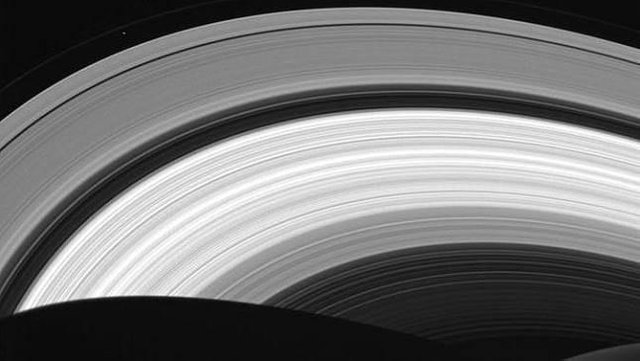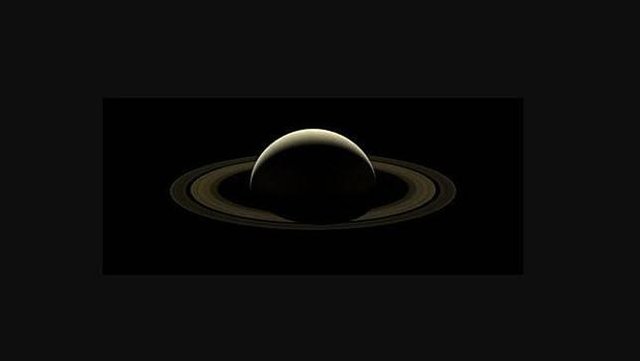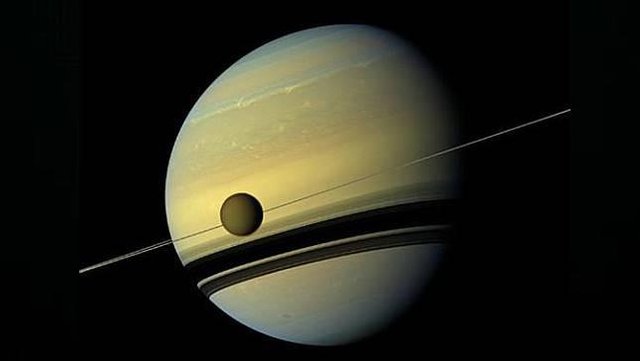There's a Weird Shadow Behind Saturn's Ring, What's That?

Shortly before Cassini dives into the planet Saturn and destroys himself, NASA's exploratory plane is immortalizing a number of photographs that are eventually sent to Earth. Some of them are photos that show strange shadows behind the planet's rings.
Shadows are taken when Cassini passes through the layer of the ionosphere of Saturn from an altitude between 2,600-4,000 kilometers (about 1,615-2,485 miles).
Photographs show the shadow as if out of the ring due to solar ultraviolet radiation that reduces ionization in the ring region.
According to research scientists from the Swedish Institute of Space Physics and NASA Goddard Space Flight Center, the reduced ionization in the region of the ring also resulted in a decrease in plasma.
Disclosed, Saturn has four parts of the ring: A, B, C, and D. Ring A and ring B actually potentially exposed to ultraviolet radiation.
Therefore, the part of the ring that is exposed to this radiation produces a strange shadow that Cassini caught. While other parts of the ring, C and D, are not affected by ultraviolet radiation.
"The thickness of the electrons in the ionosphere of Saturn changes drastically from one orbit to another, and the variation results in the effect of frictional electrons in the planet's ring portion," says researcher William Kurth.

Cassini himself blew himself up in September 2017. A few seconds before Cassini blew himself up, he sent data and a final signal to NASA. Based on the information reported by CNN, the plane drowned itself in the atmospheres of the planet in high speed.
The "Death Dive" process takes place at 6.30 am United States time. The latest data was received by the team of Deep Space Network astronomers in Canberra, Australia an hour and a half after Cassini exploded. The latest Cassini data contains transcripts related to the composition of the planet.
According to a team of NASA astronomers, when Cassini was about to blow himself up, the plane's antenna moved toward Earth. This is done so that the data delivery process went smoothly without any obstacles.
After that, Cassini exploded. Its components are spread all over the atmosphere. This dramatic blasting process seemed to make Cassini a part of Saturn.
"Cassini is the perfect spacecraft," said Julie Webster, Chief Operations Cassini. "He has done all his duties well, as we planned," he added.
Cassini himself has set a record because there has never been a NASA spacecraft that is as close as that to Saturn. Therefore, this achievement is claimed to be appreciated by the world.

The spacecraft is known to have been orbiting the Planet Ring for 13 years. In order to 'celebrate' the end of Cassini's term, NASA also released the latest video showing the final days of the plane.
Overall, the video reviews Cassini's great achievements to the end of a plane called NASA with the term "Grand Finale".
Before approaching the planet's atmosphere, Cassini itself has passed the moon of Saturn, Titan, in April 2017. This phase is considered to be quite dangerous risk.
The reason, Cassini must move quickly between the atmosphere of the ring and the Saturn Planet for collecting important data related to how the age of the ring and the composition of the planet's atmosphere.
"Although this is Cassini's last assignment, we consider this a new mission," says Project Scientist Lead at NASA's Jet Propulsion Laboratory Linda Spilker.
"We fly an exploratory plane to an uncharted place, and when he flies to a new place, it is imperative for him to discover the amazing thing," he continued.
The peak of Cassini's exploration occurred on November 29, 2016. It orbits an area called "F-Ring" after orbiting Saturn 22 times at that time.
Follow